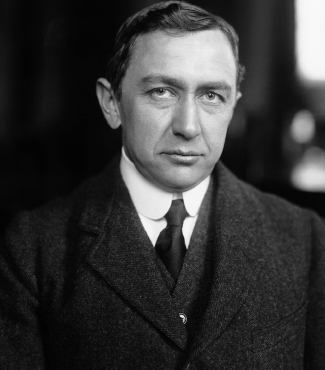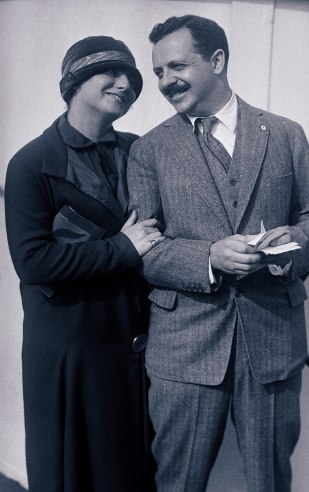Professional Public Relations Emerges
Printed Page 360
By the early 1900s, some journalists began investigating and reporting on the questionable promotional practices businesses were using. Their efforts helped increase awareness of these tactics among the public. Facing a more informed citizenry, businesses found it harder to buy favorable press and use it to mislead people. Two PR pioneers—Ivy Ledbetter Lee and Edward Bernays—realized that public relations needed to be more professional. They ushered in new approaches that emphasized honesty, directness, and an understanding of psychology and sociology.
Ivy Ledbetter Lee: Two Sides to Every Story
Press agent Ivy Ledbetter Lee counseled his corporate clients that honesty and directness were better PR devices than the deceptive practices of the 1800s, which had given big business a bad name. Lee opened one of the first PR firms in the early 1900s with George Parker. A few years later, Lee quit the firm to work for the Pennsylvania Railroad. Following a rail accident, Penn Railroad had hired him to help downplay the resulting unfavorable publicity. Lee advised Penn Railroad to admit its mistake, vow to do better, and let newspapers in on the story—rather than trying to cover up the accident or deny responsibility.

In 1914, Lee went to work for John D. Rockefeller Jr., who by the 1880s controlled 90 percent of the nation’s oil industry. Rockefeller and his Standard Oil company had image problems, especially after journalists published a powerful muckraking series about his business tactics and after his company’s strikebreakers and members of the state militia battled striking coal miners trying to win recognition for their union. Fifty-three workers and their family members were killed in Ludlow, Colorado. The oil magnate hired Lee to contain the damaging publicity fallout. Lee immediately distributed a series of “fact sheets” to the press, telling the company’s side of the story and discrediting the tactics of the United Mine Workers, who had organized the strike. Lee clearly recognized that there are several sides to every story, and that decisions about which facts to present to the public, and which to leave out, could strongly shape public perceptions. Lee also brought in the press and staged photo opportunities at Rockefeller’s company, which helped rehabilitate the Rockefeller family’s image.
Edward Bernays: Public Relations Counselor
Edward Bernays opened his own PR office in 1919. He was the first person to apply the findings of psychology and sociology to the public relations profession. Bernays described the shaping of public opinion through PR as the “engineering of consent.” That is, he believed that skilled experts, leaders, and PR professionals could shape messages and ideas in ways people could rally behind.4

Indeed, Bernays referred to himself as a “public relations counselor” rather than a “publicity agent.” Over the years, his client list included such big-name companies as the American Tobacco Company (now R. J. Reynolds Tobacco), General Electric, and General Motors. Bernays also worked for the Committee on Public Information (CPI) during World War I. In that role, he developed propaganda that supported the U.S. entry into the war and promoted the image of President Woodrow Wilson as a peacemaker.
Bernays also demonstrated that women could work in the PR profession. His business partner and later his wife, Doris Fleischman, collaborated with him on many of his campaigns as a researcher and coauthor. PR later became one of the few professions accessible to women who chose to work outside the home. Today, women outnumber men by more than three to one in the profession.